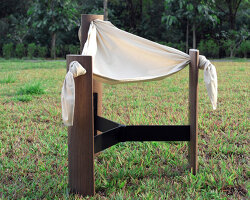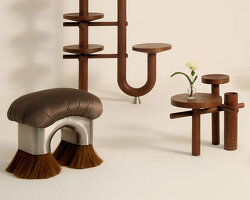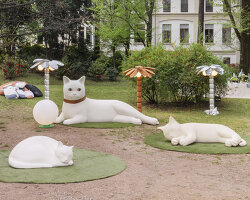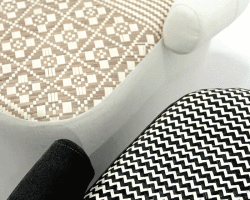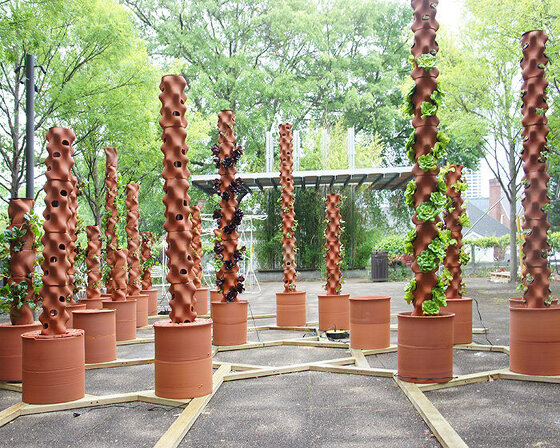blooming decay stool is designed to be biodegradable
Gisung Han’s Blooming Decay Stool is made from wildflower seeds and potato-based plastic, which blossoms into flowers as it decomposes. The project stems from the designer’s desire to create various types of bioplastics with artful, sustainable principles and with manufacturability in mind.
‘Does a chair designed with sustainable principles always need to be durable and long-lasting? How about a chair that breaks easily, becoming more beautiful as it deteriorates?’ he questions. As a result, the Blooming Decay Stool embodies the beauty of disappearance, envisioned to be disposable and biodegradable, naturally dispersing seeds back into the environment as it ages.
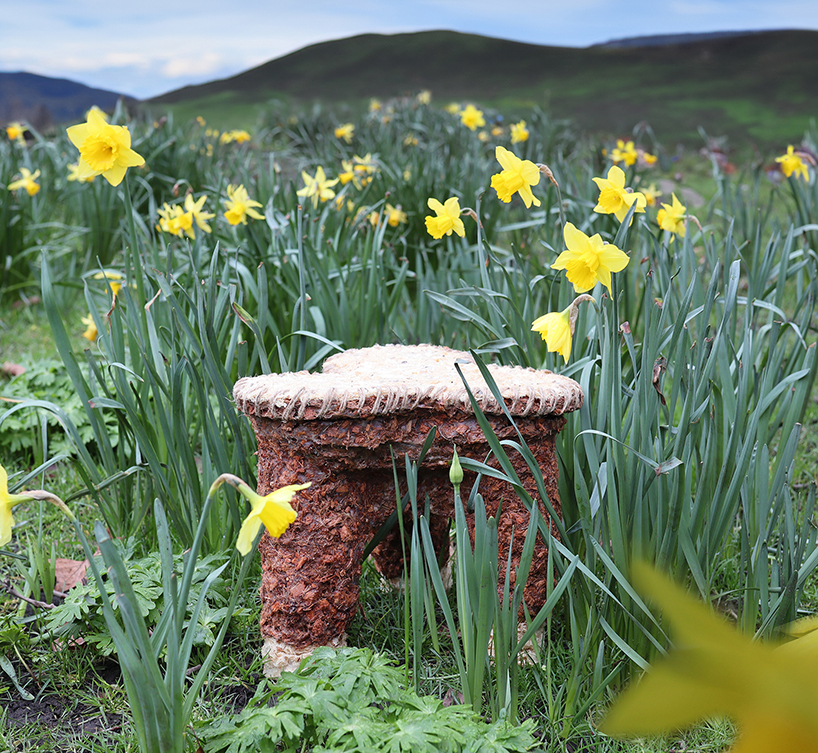
all images courtesy of Gisung Han
gisung han explores properties of bioplastics
Gisung Han envisioned the chair to be used outdoors, in campsites or festivals, where its breakage could be embraced, and it could be easily discarded. ‘I thought about scenarios where it would be acceptable to use a chair for a limited time. The Glastonbury Festival came to mind, where 210,000 people camp in a rural village, enjoy rock concerts, and then leave,’ he shares.
The designer began with exploring how various types of bioplastics — including agar, rice, corn, gelatin, and clay – could be embedded with flower seeds to bloom and grow. After various experiments, potato plastic was chosen for its strength, dryness, availability of materials, and ease of processing. Potato-based bioplastic containing seeds were then planted in a pot, which finally sprouted into potato bioplastic three weeks later. After another three weeks, it began to grow vigorously.
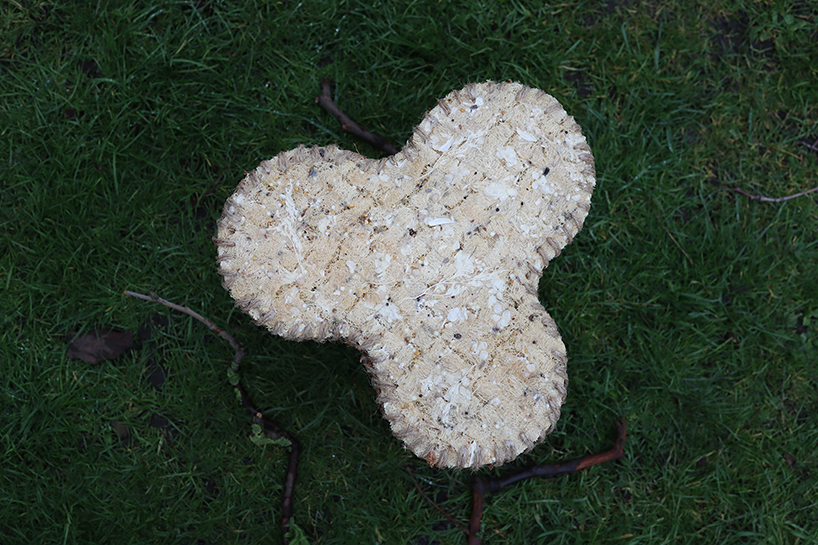
Gisung Han presents Blooming Decay Stool
Using only potatoes, issues such as mold growth and shrinkage with warping during drying were encountered, and when flower seeds and fertilizer were added, the warping only worsened. To address this, materials capable of reinforcing the structure such as coconut fiber, natural loofah fiber, hemp fiber, clay, lime, plaster, beeswax, and resin were tested. As a result, mixing in coconut provided the least warping and the best strength, while its inherent moisture-absorbing properties also prevented mold. Adding loofah also introduced elasticity, making it suitable for use as a cushion.
During the production process, Gisung Han found that both the block creation followed by machining and the 3D molds methods failed due to drying issues. The optimal manufacturing method, it was decided, was to use a 15mm flat panel mold technique, keeping in mind a meal-kit style of assembly, and to add vinegar to prevent mold.
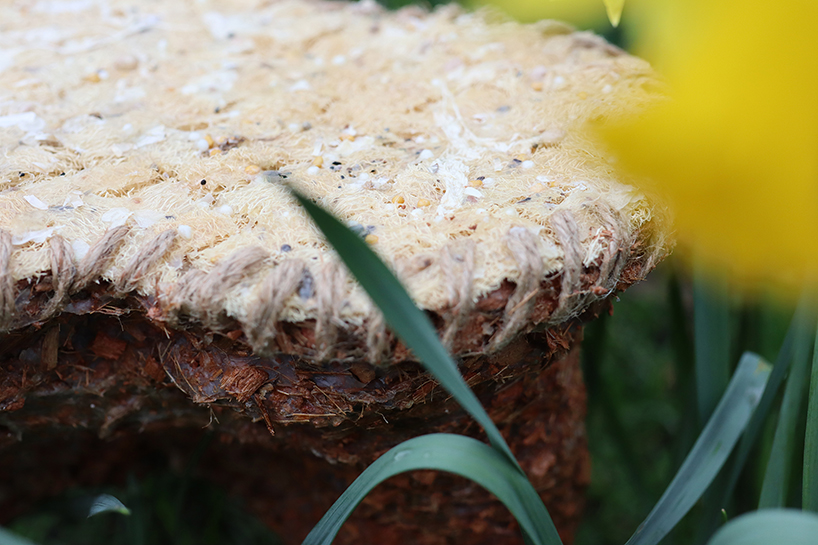
envisioned for outdoor use, where it can return to the earth
Since outdoor chairs are used on uneven surfaces, a tripod-like structure with three legs was envisioned. The legs are cylindrical to facilitate a natural return to the environment when discarded or broken. As the material is more important than the form in this design, basic geometric shapes were used, infused with added visual interest such as with the petal motif along the tabletop.

made from wildflower seeds and potato-based plastic
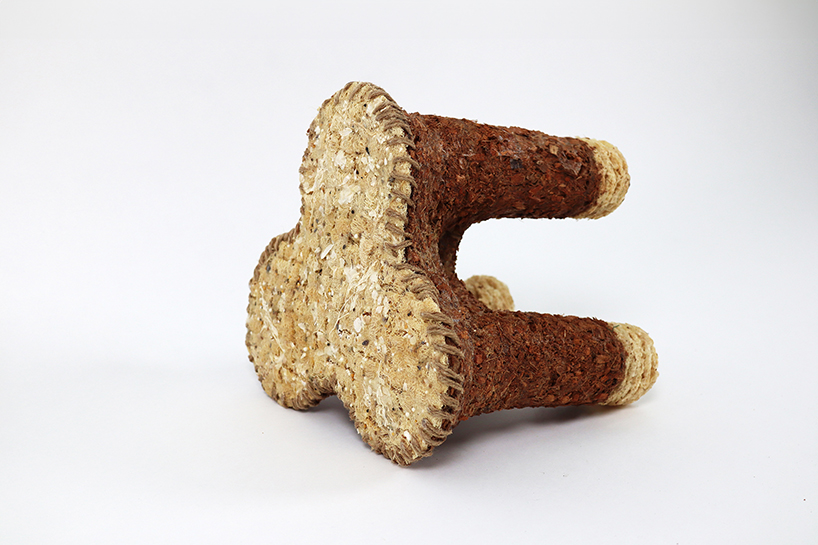
basic geometric shapes were used, with a petal motif along the tabletop
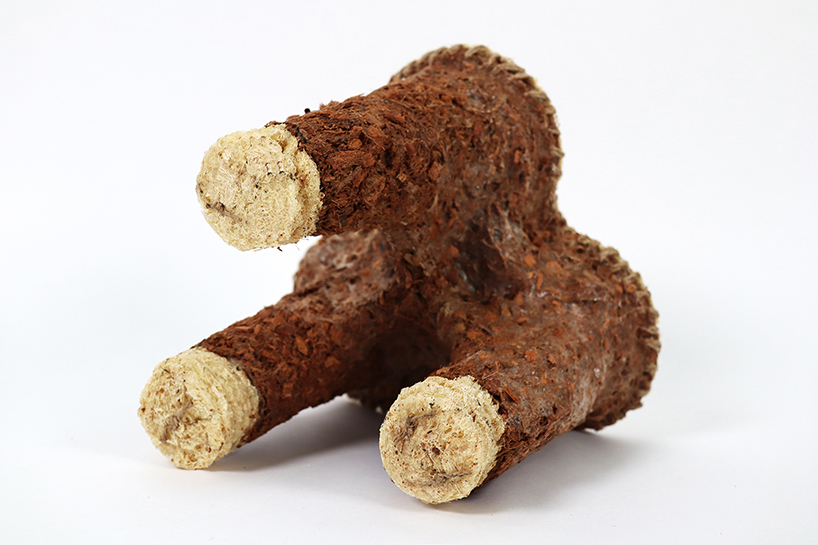
the Blooming Decay Stool embodies the beauty of disappearance, envisioned to be disposable and biodegradable
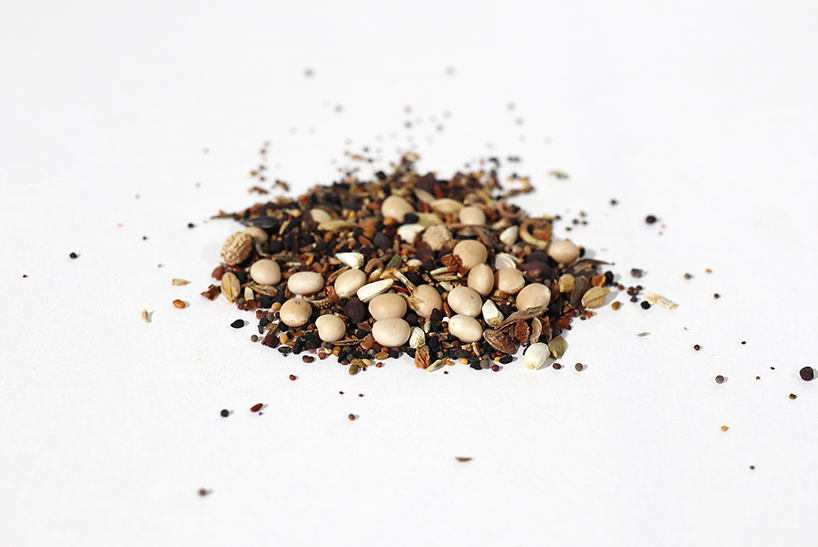
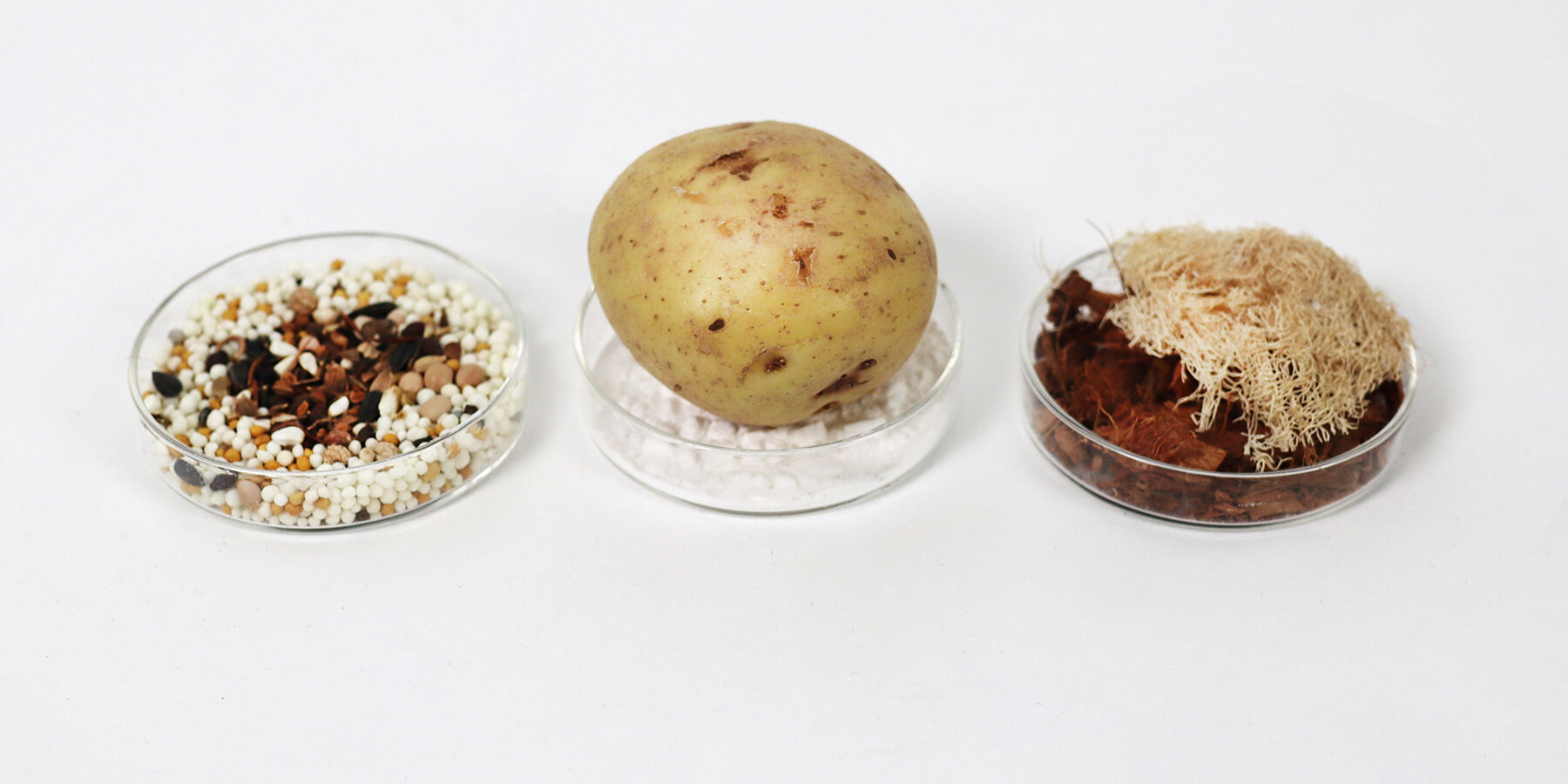
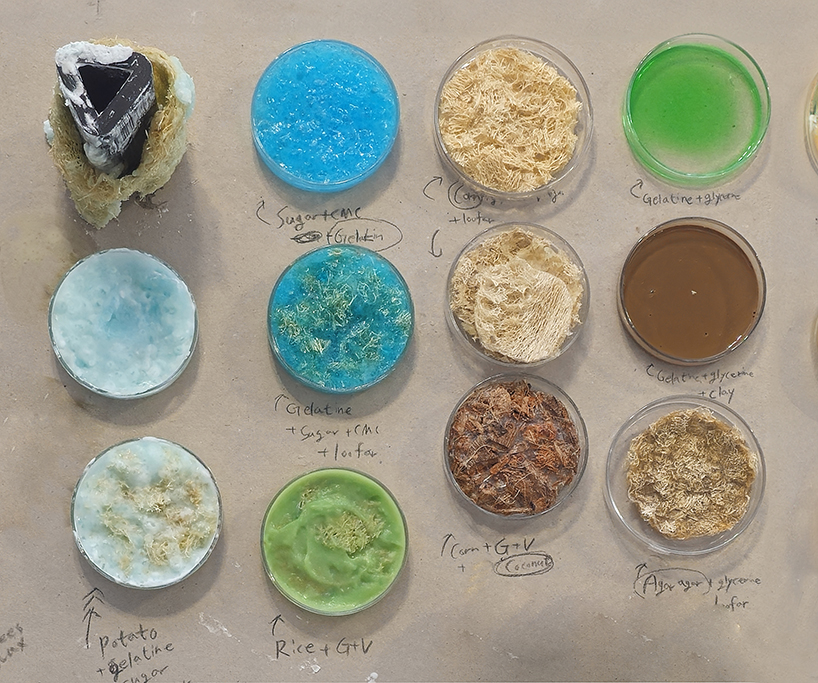
exploring how various bioplastics — including agar, rice, and clay — could be embedded with flower seeds to bloom
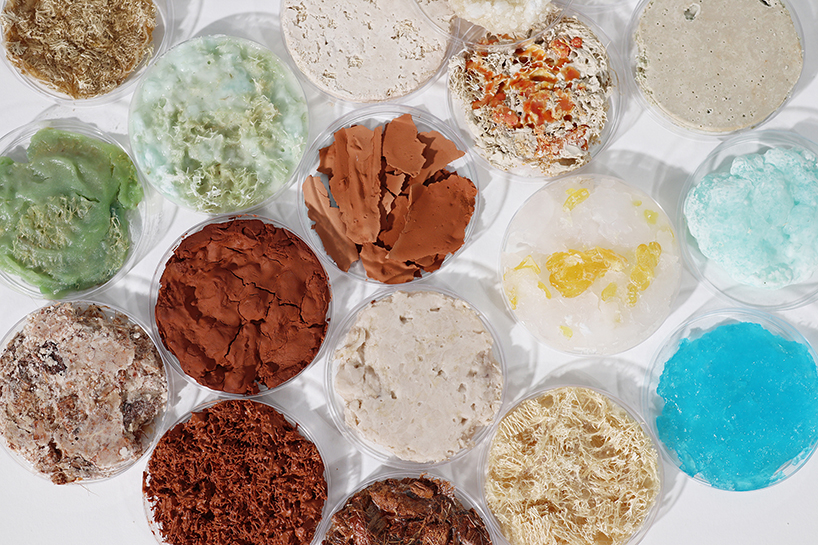
potato plastic was chosen for its strength, dryness, availability of materials, and ease of processing
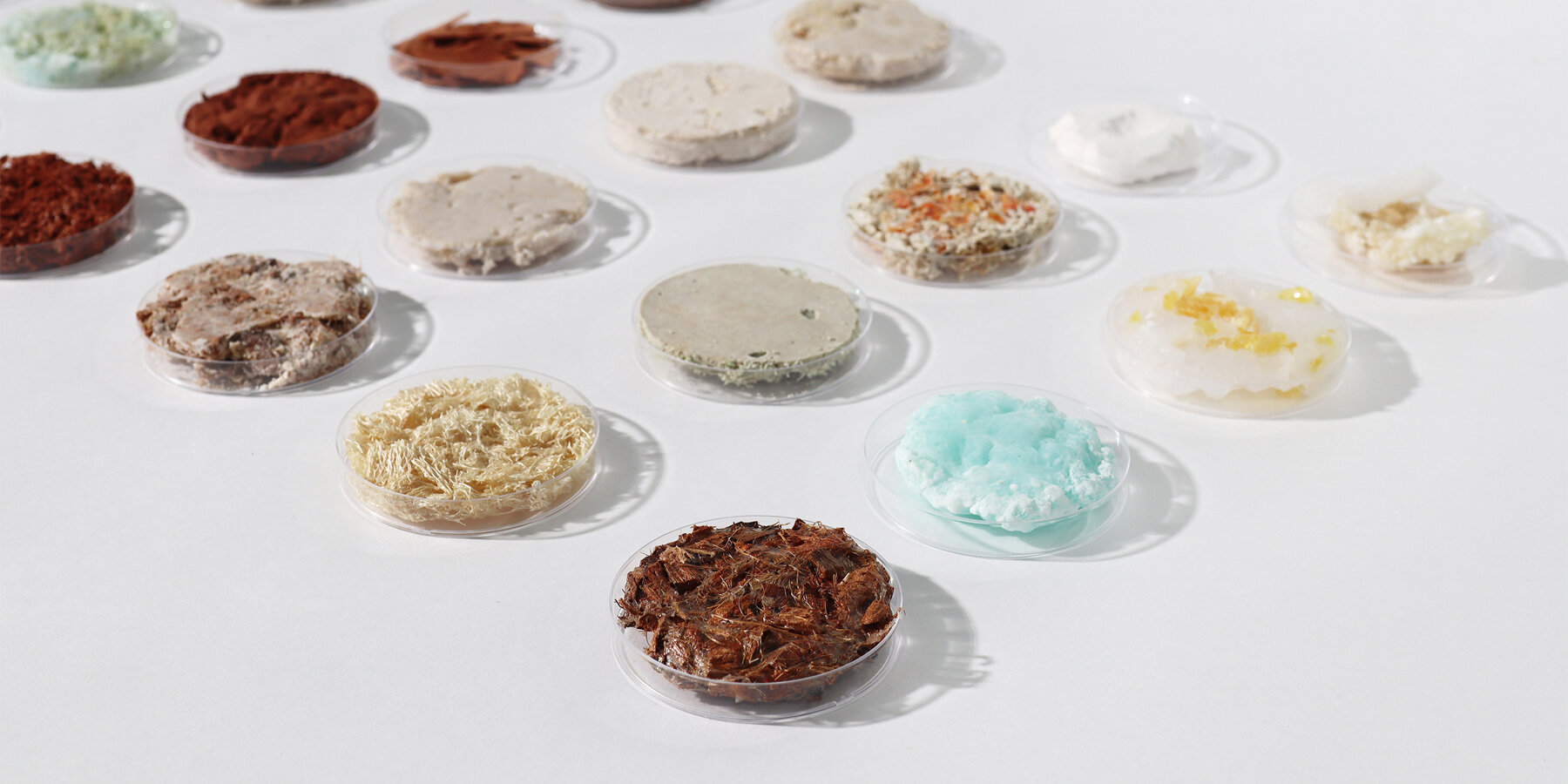
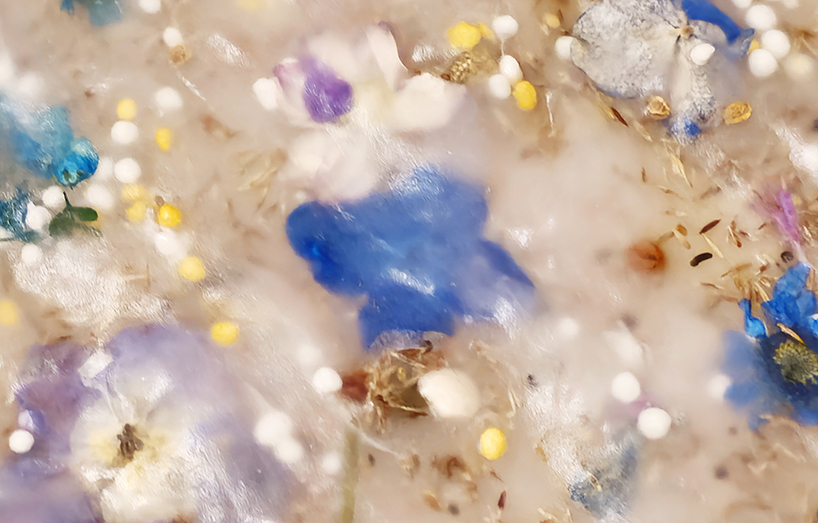
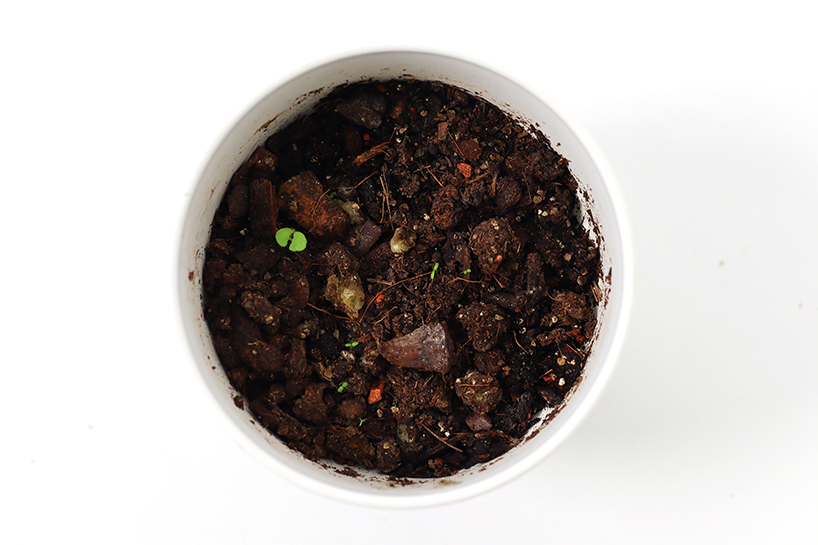
project info:
name: Blooming Decay Stool
designer: Gisung Han
designboom has received this project from our DIY submissions feature, where we welcome our readers to submit their own work for publication. see more project submissions from our readers here.
edited by: ravail khan | designboom


